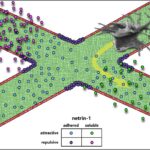Effective reading instruction relies on a combination of powerful instructional settings. This article delves into the core of one such setting: guided reading.
Defining Guided Reading
What Is A Guided Reading Lesson? It’s a small-group instructional approach where a teacher facilitates each reader’s development of strategic actions for processing new texts. These texts are carefully chosen to be at increasingly challenging levels of difficulty. In essence, guided reading involves students individually reading a selected text at their instructional level within a small group, while the teacher provides support to build their strategic reading skills. The goal is to empower students to engage in every facet of the reading process and apply their enhanced literacy skills across various instructional contexts.
The Importance of Guided Reading
Guided reading plays a crucial role in literacy development because it:
- Expands reading competencies: It supports readers in developing and refining their strategic actions for processing text.
- Provides responsive teaching: Grounded in the teacher’s understanding and respect for each student, it supports their active construction of a robust reading system.
- Offers text variety: Students engage with a wide range of texts, broadening their exposure and comprehension skills.
- Cultivates proficient reading habits: It helps students learn to think critically and strategically like experienced readers.
- Enables reading challenging texts: Students are able to tackle more complex texts with the support of the teacher.
“In guided reading, you meet students where they are and lead them forward with intention and precision.” –Irene C. Fountas and Gay Su Pinnell
What a Guided Reading Lesson Looks Like
Imagine a small group of students, at a similar stage in their reading journey, seated facing their teacher at a kidney-shaped table. Each student reads the same text individually, either silently or in a soft voice. The teacher guides a discussion of the text’s meaning, offering targeted teaching points based on observations of each student’s reading strengths and areas for improvement.
Here’s a breakdown of the typical steps in a guided reading lesson:
- Gather information about the readers: Assess students’ reading abilities and identify specific learning objectives.
- Select and analyze texts: Choose appropriate texts that align with students’ instructional reading levels and learning goals.
- Introduce the text: Prepare students for reading by discussing the topic, introducing key vocabulary, and activating prior knowledge.
- Observe students as they read: Monitor students’ reading behaviors and provide support as needed. This is crucial to understand “what is a guided reading lesson” about.
Alt text: A teacher assisting a small group of elementary students during a guided reading session, focusing on individual reading support.
- Invite children to discuss the meaning of the text: Facilitate a discussion about the text, encouraging students to share their understanding, ask questions, and make connections.
- Make one or two teaching points: Focus on specific reading strategies or skills that will help students improve their comprehension.
- Engage children in letter/word work activity: Provide activities that reinforce phonics skills, vocabulary development, or other literacy concepts.
Alt text: A teacher leads a word work activity with students in guided reading, focusing on phonics and vocabulary development.
- Extend understanding through writing about reading (optional): Have students write about the text to further solidify their comprehension and critical thinking skills. This can include writing summaries, responding to prompts, or creating their own stories inspired by the text.
- Reflect on the lesson and plan the following lesson: Evaluate the effectiveness of the lesson and plan future lessons based on students’ needs.
The Path to Effective Guided Reading Instruction
Becoming a skilled guided reading teacher requires dedication and practice. However, the rewards are significant. You’ll witness students applying newly learned strategies, demonstrating a deeper understanding of texts, and progressing to more challenging reading levels. The ability to see this growth and facilitate this positive change truly defines “what is a guided reading lesson” all about for educators. This journey empowers students to become confident, proficient, and lifelong readers.
